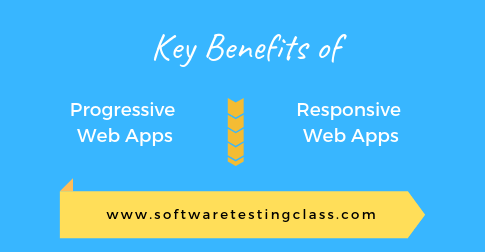As the market is getting digital, there is a great demand for the good UX i.e. the end user experience. This is the reason that in today’s market there is a great demand for Responsive Web Appls also known as RWD. The RWD ensures that the UX will remain consistent across all mobile devices, tablets, hybrid devices, and desktop browsers. Such websites are also known as responsive or adaptive websites. These websites have the capability to adjust their view depending on the size of the device’s viewport. These websites not only adjust to the screen size but also maintain the screen resolution.
The Pros of RWD or Responsive Web Apps
- The CSS is designed for these web applications such that the screen adjusts itself based on the same piece of code developed for the desktop web browser, tablets, and mobile devices.
- It is just not only fits the device screen but maintains the screen resolution.
- Unified UX (User Interface) across the above platforms.
- The same code can provide support to any new device with a different screen or viewport dimensions.
- The Selenium based Javascript frameworks can be used to automate the testing of Responsive Web applications. It can be used by both developers as well as testers.

The Cones of RWD or
Responsive Web Apps
- RWD is being noticed for some UI and layout glitches across various mobile devices.
- Responsive Web Apps has network dependency.
- There are some performance issues noticed across platforms and networks for Responsive Web Apps (RWD). Therefore, it requires continuous monitoring.
- Native mobile apps have better functionality than Responsive Web Apps on mobile devices.
All of these RWD can be addressed and resolved with the Progressive Web Apps or PWA. PWA is nothing but a superset of RWD or responsive web apps. Therefore, Progressive Web Apps has all key features of RWD and it also addresses the limitation of RWD and provides the seamless UX across all platforms and networks. PWA enables the following capabilities.
- Support for sensors.
- push notifications.
- Independence of network.
- Location awareness.
- GPS (Global Positioning System).
- Camera support.
- The network Progressive Web Apps functionality which is supported by all key browsers such as Microsoft Edge, Google Chrome, Apple Safari, Internet Explorer, Mozilla Firefox, and Opera.
PWP apps are superior to Responsive Web Apps as they provide additional benefits on the top of benefits provided by RWD apps. They add many mobile-specific benefits such as GPs, camera support, push notifications, sensor support, etc. which supplies the dev teams to implement Manifest files for these apps and provide an elegant UX to the end user across all platforms and networks.
All Progressive Web Apps require the testing of additional mobile-specific features which may not be applicable to the desktop browsers. There is a recommended tool stack for the PWA apps which the testing teams could leverage as follows.
- If the tester wants to test the RWD part of the PWP apps then Selenium and other equivalent WebDriver based frameworks are good enough for the functional testing.
- To test the specific Progressive Web Apps features, the Google lighthouse tool suite is the best testing tool which may not have any other match.
- Other testing tools for Progressive Web Apps sites could be Espresso, Appium (which is an open source test automation framework widely used to test hybrid, native, and mobile web apps), and XCUITest (it has the framework comparable to Appium to test hybrid, native, and mobile web apps). These tools can easily launch PWA sites on a mobile device, test and cover most of the mobile-specific PWA scenarios such as sensor support, push notifications, camera support, etc.
- There are other tools which could be leveraged as well. They are JSDom, Google puppeteer, PhantomJS, etc.
Conclusion
In the market, there are still many websites whose mobile version are not yet available. These websites may be planning to develop RWD sites in order to make their websites responsive. It is highly recommended for these organizations that they should be exploring the “Progressive Web Apps” option instead of RWD as they can leverage many mobile-specific benefits such as GPs, camera support, push notifications, sensor support, etc.
Also, the RWD sites though they may be performing well but moving these sites to PWA will definitely add more values as such sites, as post migration to PWA it can add additional functionalities to their sites involving GPs, camera support, push notifications, sensor support, etc. The testing of Progressive Web Apps sites may not be a challenge anymore as there are ample testing tools which are already available in the market and these tools are getting mature every day in order to cater the end-user demand for the best UX (i.e. the end user experience).
⇓ Subscribe Us ⇓
If you are not regular reader of this website then highly recommends you to Sign up for our free email newsletter!! Sign up just providing your email address below:
Happy Testing!!!